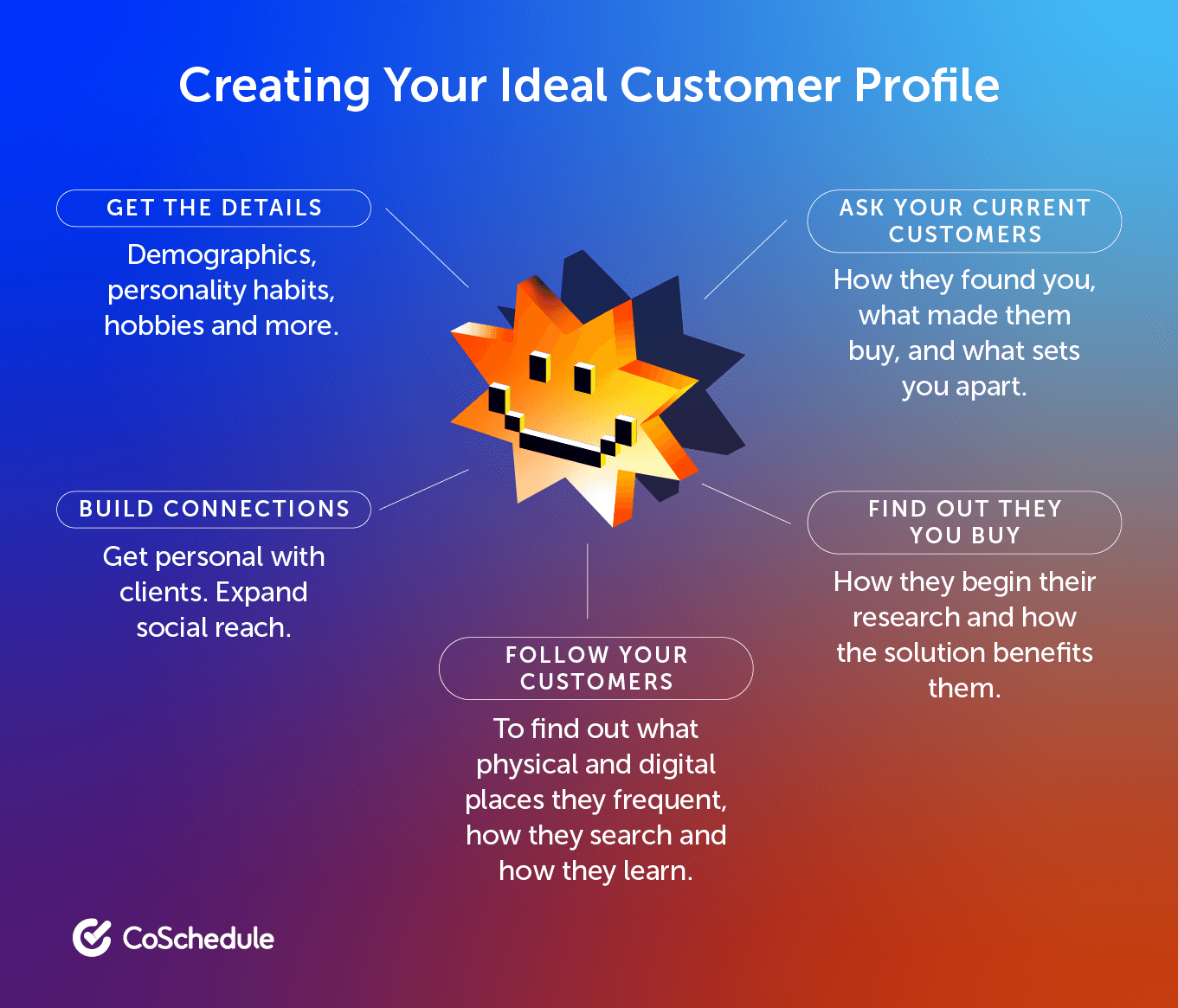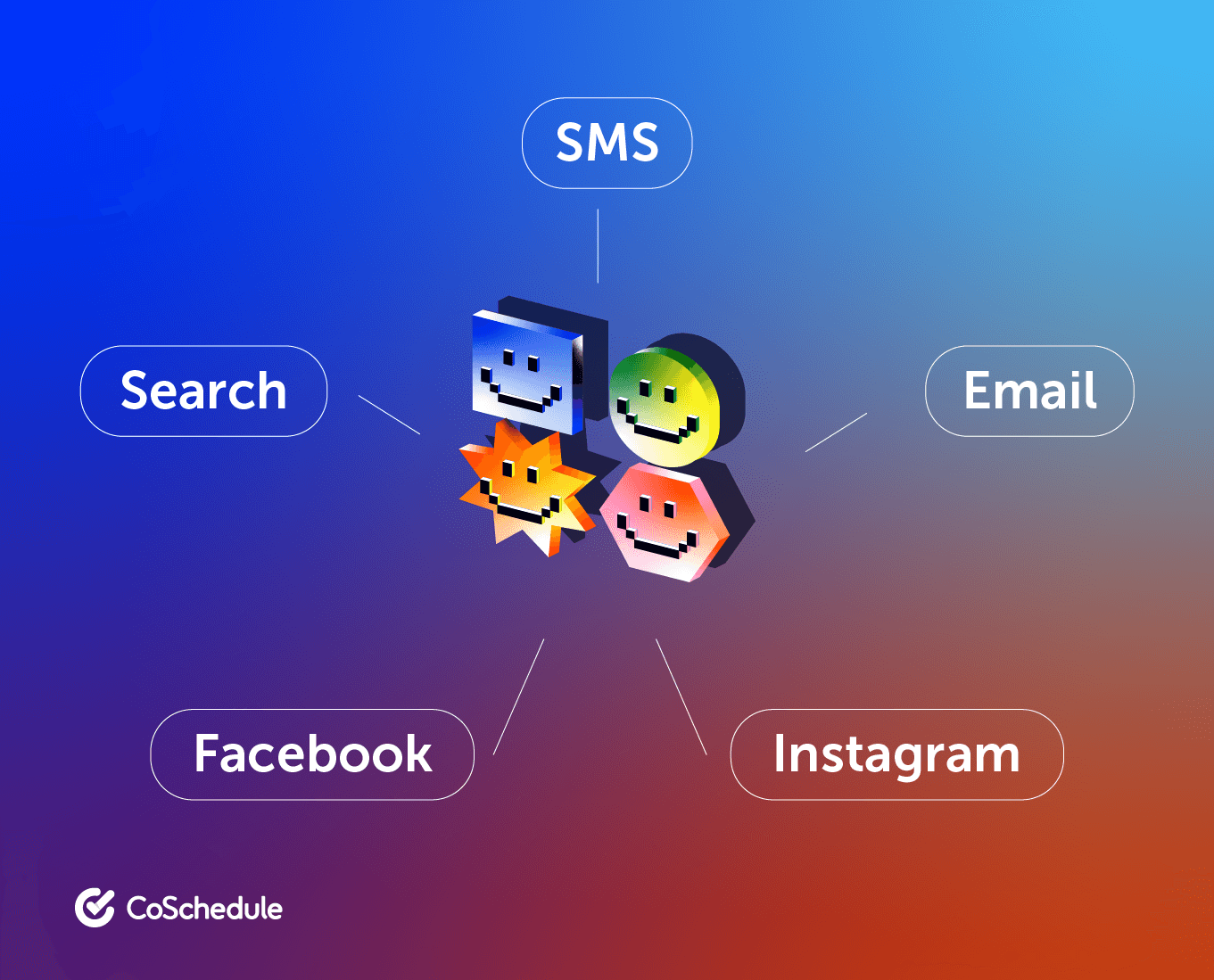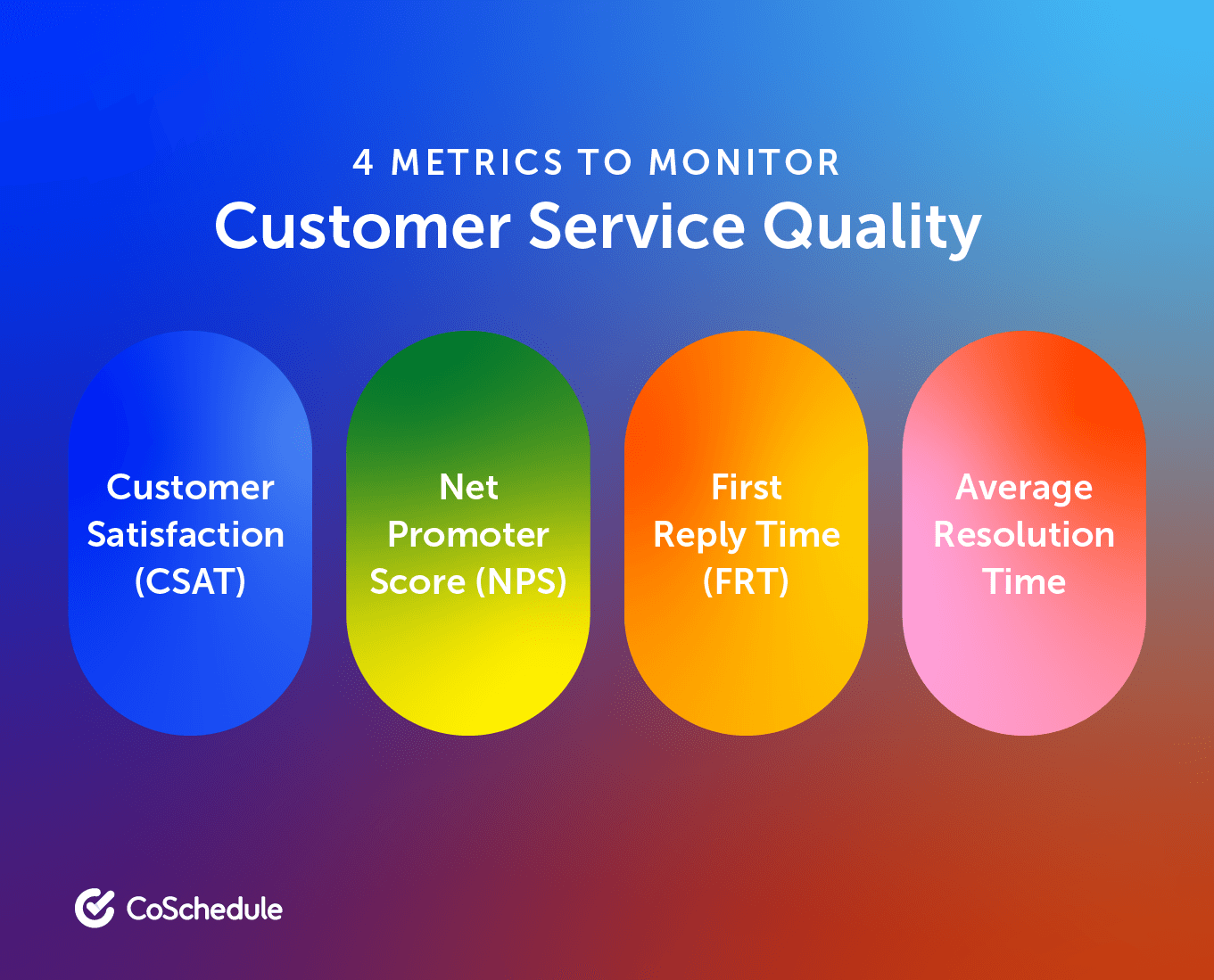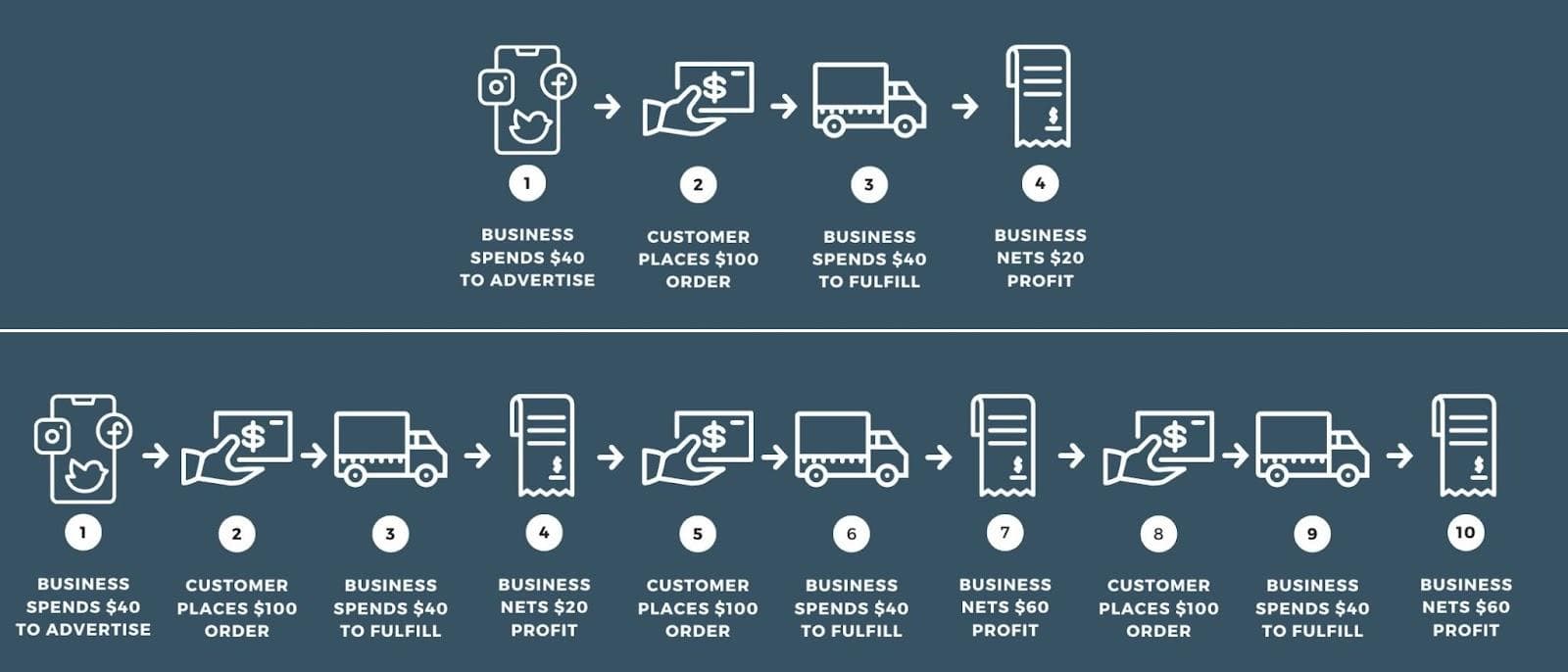How To Develop An Effective Customer Acquisition Strategy
 Are you tired of feeling like your business is treading water? Does it seem like no matter what you try, your customer base won't grow? If so, let's talk about your business's lifeblood: customer acquisition.
Businesses need a steady stream of new customers to keep their doors open, invest in talent, fund their growth, and turn a profit. But generating traffic and leads is a challenge that all businesses face. That's why creating an effective customer acquisition strategy is essential for success.
Let’s dive into how to develop your own customer acquisition strategy from scratch. You will learn how to identify, engage, and convert your target audience into paying customers through targeted, cost-effective tactics. So if you are ready to breathe new life into your business, let's begin!
Are you tired of feeling like your business is treading water? Does it seem like no matter what you try, your customer base won't grow? If so, let's talk about your business's lifeblood: customer acquisition.
Businesses need a steady stream of new customers to keep their doors open, invest in talent, fund their growth, and turn a profit. But generating traffic and leads is a challenge that all businesses face. That's why creating an effective customer acquisition strategy is essential for success.
Let’s dive into how to develop your own customer acquisition strategy from scratch. You will learn how to identify, engage, and convert your target audience into paying customers through targeted, cost-effective tactics. So if you are ready to breathe new life into your business, let's begin!
What Is Customer Acquisition?
Customer Acquisition
Customer acquisition is the process of attracting leads and turning them into paying customers. It involves identifying who is most likely to be interested in your product or service, introducing them to your business, and then persuading them to make a purchase.
How To Develop Your Customer Acquisition Strategy
Now that we understand customer acquisition and how we measure it, let's look into developing an effective customer acquisition strategy. Here is a simple 7-step framework to build your own:1.) Identify Your Ideal Customer
 If your company already has customers, start by analyzing their demographic and psychographic characteristics. Look at their age, gender, location, interests, values, job titles, and more. This data will be available on Google Analytics, social media accounts, and other marketing channels.
Once you have the basics down, consider what makes your customers unique and why they may have chosen your business over competitors. Or, if you have the resources to do so, conduct customer surveys and interviews. Ask about their needs, preferences, and perceptions of your products or services.
Recommended: Customer Survey Question Generator
And if you do not have any existing customers, begin with market research. Try to understand the market, customer behavior, and recent trends. Read industry reports, join forums, talk to experts, and get in front of as many actual buyers as possible.
Use this knowledge to create a profile of your ideal customer persona. The profile should help answer questions like:
If your company already has customers, start by analyzing their demographic and psychographic characteristics. Look at their age, gender, location, interests, values, job titles, and more. This data will be available on Google Analytics, social media accounts, and other marketing channels.
Once you have the basics down, consider what makes your customers unique and why they may have chosen your business over competitors. Or, if you have the resources to do so, conduct customer surveys and interviews. Ask about their needs, preferences, and perceptions of your products or services.
Recommended: Customer Survey Question Generator
And if you do not have any existing customers, begin with market research. Try to understand the market, customer behavior, and recent trends. Read industry reports, join forums, talk to experts, and get in front of as many actual buyers as possible.
Use this knowledge to create a profile of your ideal customer persona. The profile should help answer questions like:
- Who do we serve?
- Where do they spend time?
- What are their goals?
- What pain points do they have?
- What role do we play in their lives?
2.) Define Your Unique Selling Proposition (USP)
Every business should have a clear USP — a distinguishing characteristic, feature, or benefit that sets it apart from competitors. To determine yours, follow these three steps:- Analyze your competition: Look at what other businesses in your niche offer and how they market their products or services. Search their reviews, social media comments, and platforms like Reddit to find candid customer feedback.
- Identify your strength(s): Ask yourself why your product or service is better than others. This could be your expertise, special production processes, quality standards, or top-notch customer service. Whatever you choose, make sure that your competitors cannot match your specific strength. Potential customers should be able to readily identify that you offer a unique feature, a lower price, faster delivery, or something else of value.
- Distill your message: From your list of strengths, craft a concise USP. This one-sentence statement will reinforce why a customer should choose your business over another. Keep your USP specific and benefit-focused. A broadly-applicable statement may sound safe, but it won't motivate action. Instead, hone in on your ideal customer persona and explain how you can support them.
3.) Create A Data-Driven Approach
Marketing without data is like driving with your eyes closed — essentially guessing in the dark. Without measuring your efforts' success, you won't know how to adjust your customer acquisition strategy to push further growth. Fortunately, there are plenty of analytics tools available today. Most digital channels have built-in data analytics capabilities, and you can supplement these with third-party solutions depending on your specific customer acquisition strategy. For example, Facebook advertisers should take advantage of the native Facebook pixel. Shopify merchants may want to use Google Analytics and an attribution platform like TripleWhale. And SEO campaigns call for Google Search Console and a tool like Ahrefs or Moz to track rankings. These data providers can help you better understand the performance of your customer acquisition efforts and track everything from campaigns and budgets to website visits, leads, sales, and customer behavior. But simply gathering data is not enough. When implementing your analytics platforms, deciding which metrics are most relevant to you and your business goals is important. Beyond blended CAC, which averages your customer acquisition costs across all marketing channels, you may also want to track:- Total website visits
- Conversion rates
- Leads generated
- Return on ad spend (ROAS)
- Channel-specific CAC
4.) Explore Multiple Channels
 Testing a wide range of marketing channels offers several benefits. Businesses can reach a broader audience, diversify their customer bases, determine which channels perform best, and create a unified customer journey.
From Facebook to LinkedIn to radio and print, there are hundreds of customer acquisition channels to choose from. To get started, here are the most popular categories to consider:
Testing a wide range of marketing channels offers several benefits. Businesses can reach a broader audience, diversify their customer bases, determine which channels perform best, and create a unified customer journey.
From Facebook to LinkedIn to radio and print, there are hundreds of customer acquisition channels to choose from. To get started, here are the most popular categories to consider:
- Search engine optimization (SEO): Optimize your website performance and content to improve your visibility in search results. Build a keyword cluster, write helpful and engaging posts, and acquire white hat backlinks from relevant websites. As Google and other search engines determine that you have topical authority, your rankings and search traffic will improve.
- Paid advertising: Use targeted ads to reach a specific audience, drive website visits, and expedite the customer acquisition process. Social networks allow you to narrow your target audience based on demographics and perceived interests. Search ads are great for appearing in front of people already searching for a product or service like yours. And display ads can help to remind potential customers of unfinished purchases.
- Social media marketing: Leverage social networks like Facebook, Twitter, Instagram, and TikTok to introduce users to your brand, nurture leads, and convert customers. Visual content such as lifestyle imagery, short-form videos, and influencer collaborations can help you attract attention and establish an organic presence.
- Content marketing: Create valuable content about your products or services, the problems they solve, or the industries they serve. Publish blog posts, eBooks, infographics, videos, and podcasts, and distribute them widely. The goal here is to build trust, credibility, and brand loyalty, which can lead to lower customer acquisition costs in the long run.
- Email marketing: Offer exclusive deals, discounts, or content in exchange for opt-ins to your email list. Then, send personalized emails to prospects and customers with information about upcoming promotions, new products, or industry updates. With the right copy and design, email campaigns can help you convert leads into customers at an economical CAC. But don’t forget to follow email security best practices to avoid the spam filter and protect your email list from cyber threats.
5.) Build Strong Partnerships
One of the most overlooked strategies for customer acquisition is to leverage the power of partnerships. This involves teaming up with other businesses, influencers, or even your own customers to access their networks and increase your reach. Here are a few simple ways to build partnerships:- Strategic alliances: Collaborate with another business in your industry that serves a similar target audience. You can share resources, co-brand products, or cross-promote each other's services to tap into each other's trusted customer bases.
- Joint ventures: Instead of simply aligning incentives, create an entirely new business in partnership with another company. Joint ventures are used to create new services, expand into new markets, or share distribution channels. This can help businesses leverage each other's strengths, pool resources, and share common risks and rewards.
- Referral programs: Reward existing customers for referring their friends and family to your business. You can accomplish this through rewards, discounts, merchandise, exclusive events, and more. Because these referrals come from trusted sources, they often result in higher conversion rates and lower customer acquisition costs.
- Affiliate networks: Partner with influencers, marketers, and other businesses who will promote your products or services in exchange for a percentage of each sale. Affiliates can generate substantial revenue when adequately incentivized. So don't be afraid to offer as generous of a commission as your margins allow.
6.) Provide Exceptional Customer Service
 Customer service plays a crucial role in your customer acquisition strategy. When customers are delighted with the service they receive, they are much more likely to return and recommend the company to others. This can create a powerful flywheel effect (in which referred customers refer more customers) and help to reduce customer acquisition costs over time.
However, poor customer service can have the opposite impact as well. Negative reviews and word-of-mouth can hurt a company's reputation and turn potential customers away. This creates an insurmountable barrier to customer acquisition and can quickly derail growth efforts.
To provide exceptional customer service, monitor customer feedback, respond promptly to customer inquiries, have knowledgeable staff available to answer questions, and put your customer's needs first.
These seemingly obvious tips are often neglected as companies focus on acquiring new customers rather than impressing the ones they just converted. To ensure your customer service is up to par, keep an eye on figures like CSAT, NPS, first reply time, and average resolution time.
As you improve these metrics, you can expect to see your referral rates increase and your blended CAC decrease. These are both great signs that your customer acquisition strategy is running smoothly.
Customer service plays a crucial role in your customer acquisition strategy. When customers are delighted with the service they receive, they are much more likely to return and recommend the company to others. This can create a powerful flywheel effect (in which referred customers refer more customers) and help to reduce customer acquisition costs over time.
However, poor customer service can have the opposite impact as well. Negative reviews and word-of-mouth can hurt a company's reputation and turn potential customers away. This creates an insurmountable barrier to customer acquisition and can quickly derail growth efforts.
To provide exceptional customer service, monitor customer feedback, respond promptly to customer inquiries, have knowledgeable staff available to answer questions, and put your customer's needs first.
These seemingly obvious tips are often neglected as companies focus on acquiring new customers rather than impressing the ones they just converted. To ensure your customer service is up to par, keep an eye on figures like CSAT, NPS, first reply time, and average resolution time.
As you improve these metrics, you can expect to see your referral rates increase and your blended CAC decrease. These are both great signs that your customer acquisition strategy is running smoothly.
7.) Iterate And Improve
Customer acquisition is never complete — it's an ongoing process of experimentation, tracking, and iteration. Even once you crack the code on one marketing channel, the next challenges are scaling and eventually jumping to another. And just when you might feel like an expert, the industry evolves. The only way to stay ahead of the curve and your competition is to continuously iterate and improve your customer acquisition strategy. Regularly implement A/B tests to confirm assumptions, explore new features or opportunities, and measure the impact of changes. Then, analyze the results to learn what's working and what isn't, and use those insights to inform your next round of tests. Taking incremental steps forward can help you respond to changing market conditions and maximize the performance of your customer acquisition efforts.Customer Acquisition Vs. Customer Retention
Customer acquisition is about attracting new customers, whereas customer retention focuses on keeping these existing customers loyal to the business. But acquisition marketing and retention marketing are not mutually exclusive — the two go hand-in-hand. The more effective your retention marketing is, the more you can spend on acquisition marketing. Reducing churn and increasing the repeat purchase rate drives up customer lifetime value. And in turn, higher lifetime value can be used to justify higher customer acquisition costs. To illustrate this point, imagine your business sells widgets for $100 each. If the fulfillment of that order costs $40 and you spend $40 to acquire a customer, you are left with $20 of profit after a customer's first purchase. If the customer always churns after one purchase, you will continue to operate at 20% profit margins as long as your CAC remains $40. And if for any reason, your CAC were to jump to $60, your margins would compress to 0%.
On the other hand, if you were to fix your retention problems such that customers purchased an average of three times, this calculation would look quite different. Now your business brings in $300 in customer lifetime value, spends $120 on fulfillment, and can afford to spend up to $180 on CAC. You could comfortably budget $80 or $100 on customer acquisition to grow faster and capture more market share.
This simple example highlights why customer lifecycle marketing is crucial for long-term growth. You can test and optimize all you want on the acquisition side, but your financial success will always be capped without customer retention. A healthy balance between the two is essential to build a growing and profitable business.
To illustrate this point, imagine your business sells widgets for $100 each. If the fulfillment of that order costs $40 and you spend $40 to acquire a customer, you are left with $20 of profit after a customer's first purchase. If the customer always churns after one purchase, you will continue to operate at 20% profit margins as long as your CAC remains $40. And if for any reason, your CAC were to jump to $60, your margins would compress to 0%.
On the other hand, if you were to fix your retention problems such that customers purchased an average of three times, this calculation would look quite different. Now your business brings in $300 in customer lifetime value, spends $120 on fulfillment, and can afford to spend up to $180 on CAC. You could comfortably budget $80 or $100 on customer acquisition to grow faster and capture more market share.
This simple example highlights why customer lifecycle marketing is crucial for long-term growth. You can test and optimize all you want on the acquisition side, but your financial success will always be capped without customer retention. A healthy balance between the two is essential to build a growing and profitable business.


